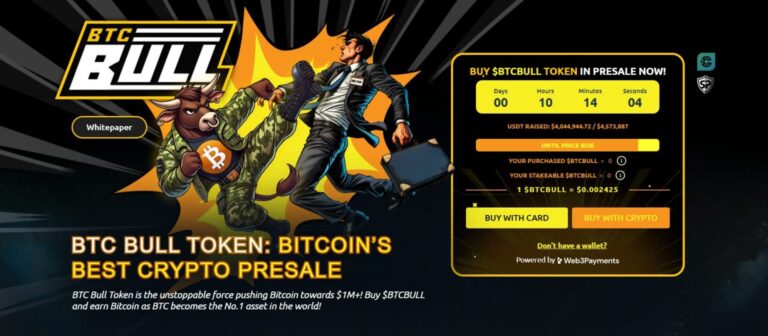Here’s What DeFi Can Do for You (Yes, You!) [Beth Canova](/en/experts/beth-canova)On December 28, 202304:00 PM Eastern |By Beth Canova| Our week of “how to trade crypto” tutorials continues. So far, we’ve covered how to turn your cash into crypto on [centralized exchanges](https://weissratings.com/en/weiss-crypto-daily/turn-cash-into-crypto-with-centralized-exchanges). And, once you’ve done that, how to set up [soft wallets](https://weissratings.com/en/weiss-crypto-daily/create-your-crypto-keys-in-6-easy-steps) and [hard wallets](https://weissratings.com/en/weiss-crypto-daily/find-extra-security-in-hard-wallets). Once you’ve followed those steps, your next logical move is to dive in to DeFi. Let’s start with the basics: What is DeFi? DeFi — or decentralized finance — is a sector within crypto that aims to remove third parties and centralized institutions from financial transactions. All the platforms and projects in DeFi are currently, or are working to become, noncustodial. For a new DeFi project to even have a hope of succeeding, it must embrace the core crypto ideology of “not your keys, not your crypto.” In short: DeFi allows you access to financial platforms — that offer lending, borrowing, trading, insurance and interest on your crypto — without you ever needing to give your crypto to a third party. This is starkly different to traditional finance and even centralized crypto platforms such as Coinbase or Binance. In those cases, you are required to give it custody of your assets for it can invest or trade on your behalf. In other words, you as an investor need to trust the firm you’re dealing with. DeFi cuts out these middlemen. How? Through smart contracts — algorithms of “if/then” code that run on a blockchain when certain conditions are met. Basically, “if” a condition is met, “then” the code is enacted. The action is then recorded and verified on the blockchain. For example, let’s say you’ve got some Ethereum ( [ETH](https://weissratings.com/en/crypto/coin/eth), “B+”) sitting in your crypto wallet. You’re not planning on selling anytime soon. So, you decide to lend your ETH to a reputable DeFi platform in return for a reward, an act called liquidity providing. When you connect your soft wallet (e.g., [MetaMask](https://weissratings.com/en/weiss-crypto-daily/create-your-crypto-keys-in-6-easy-steps)) and lend your ETH, you enact a smart contract. One that says if there’s an Ethereum transaction on the platform, then you get a percentage of the fees received by that transaction. This happens because you provided the liquidity (your ETH) that allowed the platform to function. The technology is groundbreaking. It has also expanded beyond the DeFi space. Sonoco, a global temperature assurance packaging provider, recently teamed up with IBM. Together, they want to reduce issues in the transport of lifesaving medications. To do so, they see an opportunity to increase supply chain transparency. To this end, they created a smart contract that runs on a blockchain-based platform. It tracks pharmaceuticals through the supply chain to provide trusted, reliable and accurate data across multiple parties. But within the DeFi space, the dedication to decentralization has taken smart contracts in a different direction. Instead of developers maintaining control, DeFi platforms have democratized by delegating decision making to the community. This is commonly done through governance tokens. These provide voting rights to holders, allowing them to participate in governance decisions for a particular protocol or platform. All these developments combine to bring three core benefits to the DeFi space: – Low Fees and High Interest Rates: More efficient and cost-effective financial transactions due to the elimination of third-party intermediaries. – Security and Transparency:Increased transparency due to blockchain technology provides users with a higher level of confidence in their financial activities. – Accessibility: The removal of geographical restrictions means that DeFi operates around the clock, opening new opportunities for financial inclusion and economic empowerment. As you may expect, a brand-new financial sector is going to endure some growing pains along the way. At the time of this writing, the main cons of the DeFi space can be summed up this way … – Complexity: The complex nature of the elements that make up DeFi can be daunting for less tech-savvy individuals, which could lead to them making costly errors. – Smart-Contract Risks: Smart contracts are just algorithms. These lines of code are only as secure as the coder made them. As such, they can be susceptible to hacks and bugs. – Lack of Protections: The open-source nature of blockchains make hacks incredibly easy to identify quickly. Yet, there is little that can be done once your crypto has been taken. Platforms largely do not have any consumer protection mechanisms in place. If you want to go for the opportunities made possible by DeFi, you’ll need to be mindful of the above detriments to the space. To do that, here are … 5 Ways to Navigate DeFi Do Your Own Research: Naturally, taking time to vet any DeFi platform you’re interested in should be at the top of your list. And you don’t need to be a tech expert to do this. Read the project documentation and assess the credibility of the team behind it. Usually, these can be found on the project’s main website. Be wary of any platform that isn’t transparent about its tech or team. You can also use platforms like [DeFi Llama](https://defillama.com/chains) to see the total value locked on each platform. TVL, as it’s called, represents the volume of liquidity locked on a platform. This translates into a measure of usage. Think of TVL like bank deposits. If a bank is attracting deposits, it can earn money by lending or investing that money. If deposits are declining, then the opposite is true — the bank can’t lend as much, leading to less income. If a DeFi platform has a large TVL, then it gives the impression that it is a secure platform, trusted by crypto investors. Update Your Software: Developers often release updates to address security vulnerabilities and improve performance. So, keeping your wallet software and browser extensions up to date is important for interacting with DeFi. Stay Informed: The DeFi space is dynamic, and new risks and opportunities arise regularly. Most platforms have an X — formerly Twitter — account, Reddit account or an online blog they use to update the community of any pressing news or developments. You can also always check in with us here at Weiss Crypto Daily. Like with the Ledger hack two weeks ago (where the remedy was as simple as [clearing your cache](https://weissratings.com/en/weiss-crypto-daily/immediate-action-required-temporary-suspension-of-all-wallet-activities)), we’ll let you know what to do as soon as we can. Beware of Scams: While this is good advice in general, phishing attacks are particularly common in DeFi. Treat any unsolicited emails, texts or messages with caution. Double-check the sender’s name and the URLs of any links before clicking them. And when in doubt, don’t click at all. And remember: Anyone who asks for your [wallet seed phrase](https://weissratings.com/en/weiss-crypto-daily/create-your-crypto-keys-in-6-easy-steps) or prompts you to fill it in yourself is a scammer. Diversify Your Portfolio: Just like in TradFi, making sure you don’t have all your eggs in one basket can go a long way in insulating you from harm in the DeFi space. Use multiple platforms to go for more opportunities and spread any risk exposure across multiple assets or platforms. That will reduce the potential impact of a security breach or loss on your overall portfolio. Arm yourself with the knowledge and tips above. And I’ll come back tomorrow to cover some of the most popular DeFi platforms and how you can use them to further your crypto goals. Best, Beth Canova Crypto Managing Editor
















